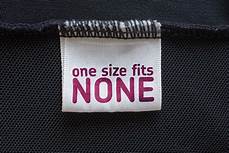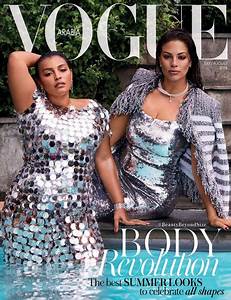Fashion & Inclusivity.
During recent times, fashion retailers and designers have seemingly started to become more transparent with their customers, and the fashion industry has begun to grow in the way of inclusivity. Nowadays, the products themselves aren’t the only focus for creators, and words such as ‘diversity’, ‘inclusivity’ and similar others have become buzzwords throughout the media, especially concerning fashion.
But what is inclusivity, and how is it being incorporated into the fashion industry.

What is inclusivity?
Inclusivity doesn’t just come up in the fashion industry, and it pops up everywhere, from workplace rules to general social etiquette, but no-one ever really stops to fully explain its meaning. In fact, it’s one of the most misunderstood words, and that can cause lots of problems, especially when it’s something we should naturally involve anyway.
In general terms, inclusivity is a practice, and it’s all about creating equality and supporting for those who are socially disadvantaged or would otherwise be marginalised in an exclusive setting. Its purpose is to treat everyone equally, and provide equal opportunities, regardless of class, sexuality, gender, race, ethnicity, disability and more.
Anyone with any basic level of understanding of the idea of inclusivity should be able to recognise its importance throughout every element of society, so why is it so frequently misunderstood? The truth is, it’s grouped with similar buzzwords such as diversity, which has a different meaning, and this blurs the lines between the two definitions.
In the fashion industry in particular, inclusivity is the idea of accepting everyone and offering everyone fair treatment, creating an environment where every race, gender, body size and shape, and more have equal recognition and appreciation.Is the fashion industry inclusive?
Because of the nature of the term inclusive, there’s no specific point to say when the fashion industry is or isn’t inclusive, but it’s often clear to see the direction in which the industry is pointing towards.
The truth is that, while it’s clear to see fashion has certainly become more inclusive recently, and this is obvious when compared to the climate fifty years ago, there’s still a long way to go. It’s still not rare to see a runway dominated by tall, slim, seemingly flawless models with perfect bodies, and this shouldn’t be the normal.
Often, the fashion industry can confuse inclusivity with the tokenisation of previously marginalised groups, meaning one or two people who don’t conform to traditional standards are displayed to show the brand’s outward ‘inclusivity’, when the truth is that those models have only been chosen to represent their groups, and to make the company appear more diverse and inclusive.
This is a problem as it can create the illusion that the fashion industry is accepting and welcoming to anyone when the reality is that it’s all just for show. Of course, this isn’t the case for every company or brand, but it is a scenario which appears too often, and it’s a toxic practice.

Final thoughts
While the fashion industry has clearly made improvements in the way of inclusivity, these changes aren’t enough, and there’s still a long journey ahead before the entire industry provides equality for every single person. It’s important to be aware of this topic, so you know how to help and where change still needs to happen.
Recent Posts
-
Lizzo & Fashion
Popstar and celebrity idol Lizzo is an iconic piece of our society, and she is a valuable asset to
-
TikTok and Plus-Size Fashion
If you’re active with your social media platforms, you’re probably familiar with, or have at least




